Marian Townsend Maxson: Open Space
Buying a comfortable home and settling down to raise a family were common dreams for members of Minnesota's Greatest Generation. Marian Maxson and her husband, Paul, were living with her parents in 1940 when they decided to build their dream house in the small town of Richfield, a place where they found "open space." Mrs. Maxson shared her memories of watching Richfield grow in a 2007 interview with historian Thomas Saylor.
Audio
Transcript
TS: Now, 1940 was a time when there wasn't much construction going on. What prompted you and Paul at that point to hire a contractor to build a home?
MM: Well, the day Paul brought me home from the hospital . . . my oldest daughter was premature, so she had to stay at the hospital. And he drove me out to Richfield and he drove by this lot and he said, "We're building a house here." And it was a lot 110 by 220 feet and it was surrounded by 68th Street, Lakeview Avenue and Oakland Terrace. It was kind of a little area there. It was a park. Fairwood Park was on the west side and there was a swamp on the east side, which is now Monroe Field, a grassy park with a ball field and a great hill for sledding in winter.
We were living with my folks then because we didn't have a home. So he said, "We're going to build a house." And my father happened to know a contractor named Mr. Leslie. So he came over to my folks and he sat down. He said, "Well, what kind of a house do you want?" We told him, and then we thought we’d better get financing. The first place turned us down. My husband wasn't making much money.
TS: But he was employed at Northwest Bell Telephone Company.
MM: Yes. He was working there but he hadn't gone up the ladder very far. I think he started at sixteen dollars as a . . . he delivered mail. ...But anyway, the first place turned us down and Mr. Leslie said, "Oh," he said, "Don't worry about it. I'll get the financing for you.".
...So this kind man did. We built our house for $5,300. ...It had an attached single garage. It had two bedrooms and kind of a galley kitchen. You know, just a one-lane kitchen with a stove and refrigerator and cupboards. Full dining room and a breezeway porch.
TS: Now, because we're talking about Richfield here, if you closed your eyes and tried to imagine what life in Richfield was going to be like in 1940, what kind of came to your mind? What kind of place was Richfield in 1940?
MM: Well, it was close to my church. I belong to the Richfield United Methodist Church, and my folks lived on 53rd and Colfax. It wasn't too far from home. And Penn Avenue was pretty good transportation. We used to bicycle and hike out there. And I knew there were some stores out in the 66th area of Penn Avenue, because we bicycled out or walked out. We did a lot of walking in those days, my sisters and I. And so I just . . . and things were starting. There was a post office. So I just felt that it was going to grow maybe. It was open. The spaces were open. I thought that was neat.
TS: When you looked in your house there, when the house actually was constructed, what did you see if you went out your front door? What did you see to the left and the right?
MM: I saw one house in the whole area. You couldn’t see Wood Lake from our house. But originally people had moved out around that area and built cottages because Wood Lake was so close. It was a big lake at one time. So there was one house down the block and then in our little block there was a cottage on Lakeview Avenue and then there was one house, the Scott house. And of course we got acquainted with them. There was one lot in between Scott's and us. And then there was one other house that we could see from our yard. That was like a farmhouse. They had chickens and animals, but no cows or anything.
TS: Wow. So you really were, in a sense, one of the initial houses in the area there. ...Now you mentioned that houses started to be built pretty soon after you moved in.
MM: Right. It just all of a sudden . . . except for down on Knox Avenue. But in our little section and down on Knox Avenue towards 66th Street a few houses started to be built. Because there was the park area there and 66th Street was a good street and Penn Avenue was good. So some of the houses started to be built at that time.
TS: When the war ended, can you recall, did houses continue to be built when the war ended and your husband got home?
MM: Oh, yes. The streets filled up. People moved in across the street and there was like . . . they had to put a fence around the area across the street. The water level was so low from Wood Lake. They had sump pumps in the houses across the street. Of course, that changed as the water table disappeared. The freeway. And then the houses started to be built. In our neighborhood every house is different, because they were all built at different times by different builders. There’s some stucco, some wood frames and some two-stories.
One builder didn't come in and build them all. Except for the three houses across the street. They were by the same builder. But otherwise the people would buy a lot and have a house built. So it wasn’t always the same type of house, and our area is a little different.
TS: Yes. There are a lot of streets in Richfield where you can see there wasn't much variety.
MM: Just in this little area. Because it was convenient to 66th Street. People with cars. They didn't want to go much further out. So our little area built up quite rapidly. But further out, then the contractors came in and built houses. Especially on the west side of Penn Avenue. That was all tract built.
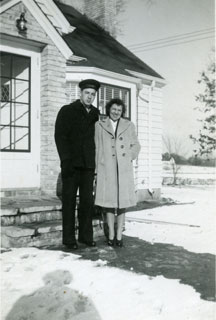


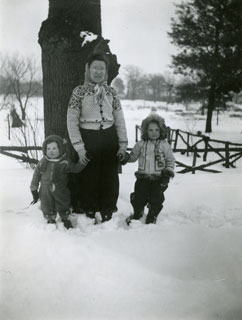
![Photo: The Maxson family home in Richfield [undated].](../../../sites/default/files/mgg/artifacts/img_view/maxson_house.jpg)
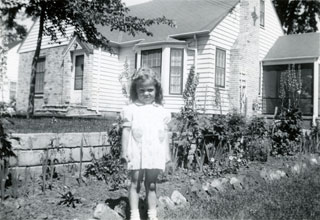

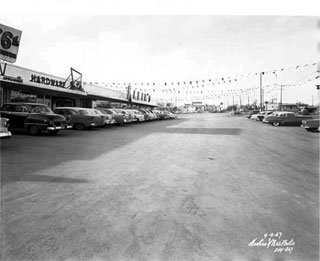
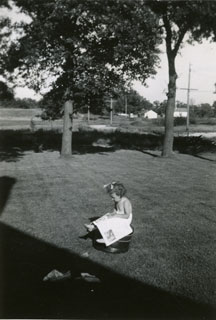
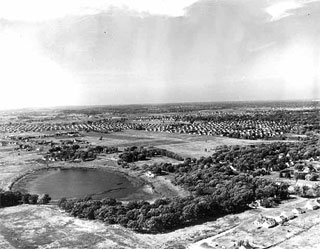
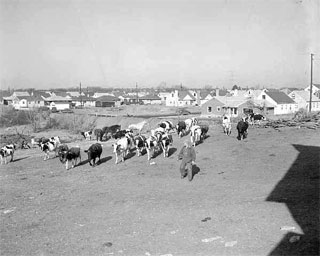
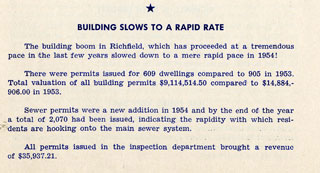
Source
Maxson, Marian; Thomas Saylor, Interviewer, Richfield Oral History Project, Minnesota Historical Society Oral History Collection, 2007.


